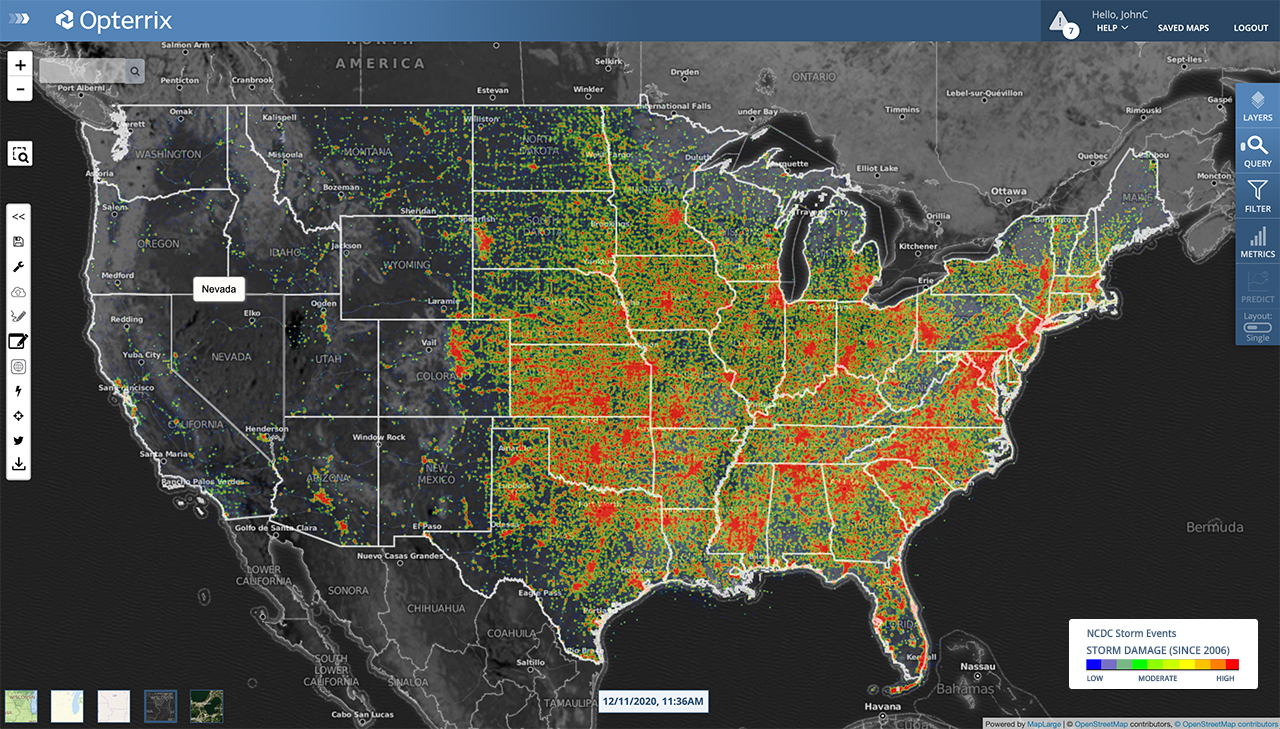Whether due to new population growth or urban/rural migration patterns, the population of the United States continues to construct new buildings in regions that are prone to experiencing natural hazards. The top five of these, as depicted in this EOS article, are earthquake, wildfire, flooding, hurricanes, and tornadoes.
Many of the locations have a history of settlement because they also have desirable traits for the communities to have grown up around. Communities often started near access to water, at a crossroads for trade, near quality agricultural land, or near natural resources.
As we look at more recent population growth trends, people continue to look to these existing communities for employment opportunities and access to infrastructure. It is noted that even if new populations are informed of likely hazards in the growth regions, they are likely to believe that the hazards will not will not affect them. This pattern is known as an ‘Optimism Bias.’
Opterrix has the tools the insurance industry can use to identify these hazard hotspots and visualize overlapping exposure they currently hold in each. This information can also be used to help build mitigation programs or to incentivize new growth outside of these hazard zones. Learn more at Opterrix.com.

